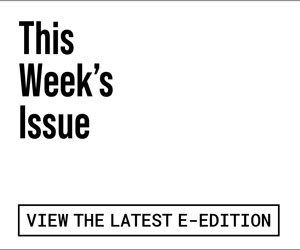 You are currently serving your first year on the California Coastal Commission. What has your experience been like, and what can we expect from the commission in the near future?
You are currently serving your first year on the California Coastal Commission. What has your experience been like, and what can we expect from the commission in the near future?
I was very honored last August, when Assembly Speaker Karen Bass appointed me to serve on the California Coastal Commission. It is an amazing responsibility to represent the Central Coast on a body—with the stated mission to “Protect, conserve, restore, and enhance environmental and human-based resources of the California coast.”
The Coastal Commission was established by Proposition 20 in 1972 and made permanent by the legislative adoption of the California Coastal Act of 1976. Since that time the commission has had a primary function to protect the coastal environment for future generations. I am particularly pleased the commission will soon meet here in Santa Cruz for the first time since 1986. We will meet from March 10 to 12 in the County Board of Supervisors chambers, giving local people a great chance to observe and participate.
The job of the commission is to apply the Coastal Act to land use decisions made along California’s 1,100-mile coastal zone. The act protects coastal resources, with specific emphasis on shoreline public access and recreation, lower cost visitor accommodations, terrestrial and marine habitat protection, visual resources, landform alteration, agricultural lands, commercial fisheries, industrial uses, water quality, offshore oil and gas development, transportation, development design, power plants, ports, and public works. The responsibility of the commission virtually includes every human activity along the coast. The Coastal Zone itself varies quite a bit based on local topography and urban facilities. Along the North Coast of Santa Cruz County, for example, the Coastal Zone extends approximately five miles inland. In our cities and the urban core of the county, it generally goes to the first parallel major public street. South of Capitola, the Coastal Zone is everything south and/or west of Highway 1.
The commission itself is made up of 12 commissioners. The governor, the Senate Rules Committee, and the Speaker of the Assembly each appoint four members, two from local government from specific regions and two public members. For example, the seat I hold is a speaker’s appointment of a local elected official from Monterey, San Mateo or Santa Cruz counties. The public appointments are entirely at the discretion of the appointing authority. The public members run the gamut from dedicated environmentalists to developers, to the governor’s former entertainment attorney. The governor may remove his or her appointments at any time, but the legislative appointments serve for fixed terms and cannot be removed for merely political reasons. My term runs through May 2012.
The commission meets every month for either two or three days, depending upon the size of the agenda in different cities along the coast. Virtually every coastal community has the eventual opportunity to observe at close hand a Coastal Commission meeting.
There are two significant local issues pending before the commission. The first is the Arana Gulch Master Plan that will be heard at the March meeting to be held here in Santa Cruz. The second is the La Bahia Development near the Boardwalk that will be scheduled for a later date. Both are complex significant issues and have had their share of local controversy.
Being a part of the Coastal Commission has been a tremendous journey for me. I have met some great people and I have been learning a lot. I am proud to serve and to bring a Santa Cruz County perspective to these important, statewide decisions.












